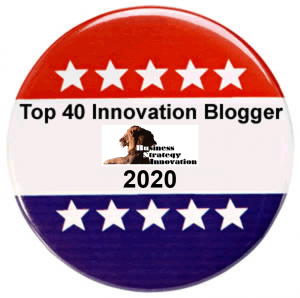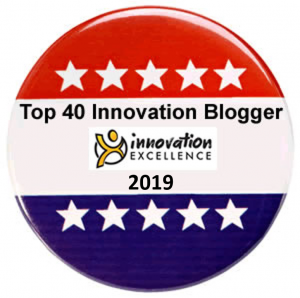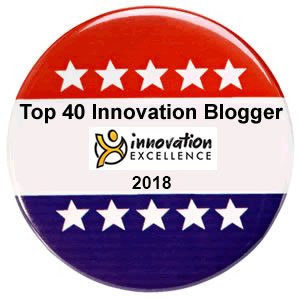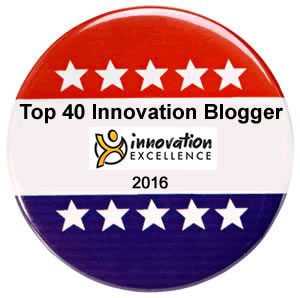I recently caught up with a long term, highly successful and esteemed colleague who proudly shared with me her latest model for developing high performance leaders in global corporations. It was a very comprehensive and multi-faceted model, that clearly outlined the evolution of her company’s learning and development process for leadership education. What caught my attention was the absence of any reference to adaptive, resilient, agile or innovative leadership, or towards developing capability in ‘on the job’ innovation coaching to retool to win in the next decade. Which is what leading and coaching innovation is all about!
The world has changed – how is it that she hasn’t noticed?
The recent Quarterly Magazine “Management intuition for the next 50 years” McKinsey & Co avidly describes this newly emerging world, which seriously mandates creating a new paradigm for leading and coaching innovation;
“The world ahead will be less benign, with more discontinuity and volatility and with long-term charts no longer looking like smooth upward curves, long-held assumptions giving way, and seemingly powerful business models becoming upended.”
“Emerging on the winning side in this increasingly volatile world will depend on how fully leaders recognize the magnitude- and the permanence – of the coming changes and how quickly they alter long-established intuitions”.
The Boston Consulting Groups 50 Most Innovative Companies Report states that Innovation remains a top-three priority for three-quarters of respondents, with more than 60 percent spending more in 2014 than in 2013. Despite the high priority and increased spending on Innovation, one troubling fact stood out – the fear that “results may be elusive”.
The vast majority of executives, in fact, 70 percent, stated that their companies’ innovation capabilities are only ‘average’ and 13 percent see them as ‘weak’. When they talked with executives around the world, however, the aspiration to raise their innovation game was nearly universal; yet “They ask how does my company breakthrough?”
What is the emerging leading and coaching innovation paradigm?
This emerging paradigm distinguishes between what we know and practice now as ‘leadership’ and what ‘innovation leadership’ really means in terms of capacity, confidence, and capabilities. This suggests that we require a new vision of preparing, developing and enabling capable innovative leaders through ‘on the job’ innovation coaching to create the kind of ‘breakthrough innovation’ companies want, need and aspire towards.
How will is leading and coaching innovation enabled?
This requires a shift from a performance-driven system to the development of a learning and performance ecosystem. Which is flexible and adaptable, creative and dynamic, and is shaped to enhance individual and organizational effectiveness. To connect people and support them with a broad range of content, processes, and technologies that drive performance and innovation. Innovation coaching is an adaptive, ‘on the job’ bespoke learning through doing the process.
There is an opportunity for supporting and enabling leaders to create breakthrough innovations through the development of specialist innovation coaching. For key players in the coaching industry, to maximize this opportunity by shifting their own business games and breaking through to become authentic coaches for innovation!
To create and drive such a system requires a new innovative leadership imperative – the art of breaking through!
Leading and coaching innovation help leaders facilitate breakthroughs.
We define this as someone who contributes the best of oneself and generates the best from others, for the good of the whole – in the context of innovation and entrepreneurship to shape the new world.
Our research suggests that there are seven key breakthrough capabilities and roles for successfully coaching and leading to shift consciousness, and to flow and flourish in an increasingly volatile, uncertain, and complex world.
1. Leader as a value creator
- Putting customers first by analyzing markets and behaviors to understand and empathize with their needs, problems, and desires.
- Adapting lean and agile methodologies and business models to satisfy solve and fulfill these needs, problems and desired.
- Creating innovative products and services that add value to the quality of their lives in fresh and creative ways.
2. Leader as explorer and visionary
- Courageously explore uncharted and dangerous waters and relentlessly re-inventing themselves and their organizations.
- Envisioning wicked problems as possibilities that can be transformed into innovative solutions that customers and clients value and cherish
3. Leader as a connector and connected
- Confidently, courageously and compassionately creates connections, and networks across differing and diverse teams, business units, fields and multiple disciplines
- Maximizes opportunities to embrace diversity by sharing knowledge, skills and experience to create and invent ideas and solutions.
4. Leader as an intuitive strategist
- Letting go of what their subject matter expertise to sense and see operating patterns and emerging trends.
- Making sense of novel inputs, perceiving and discovering new directions by making connections across seemingly unrelated questions, problems or ideas.
- Thinking outside of the box to create breakthroughs at the intersection of diverse disciplines & fields.
5. Leader as technologist
- Understanding the scope and opportunities available for their organizations in the internet of everything.
- Creating entirely new business models and revenue streams, both for startups and established companies that can leverage existing assets in exciting, profitable new ways.
- Changing the basis of competition to enable them to compete as part of an industry ecosystem.
6. Leader as a disruptive provocateur
- Embodying the being and enacting the thinking states, innovative mindsets, and generative discovery skills and practices to enable people to be, think, and act differently to create breakthroughs.
- Fearlessly questioning, challenging, and disrupting ‘what is’ to experiment with and taking bold and intelligent risks and embracing failures that generate improvements and learning.
- Resulting in unexpected breakthroughs, paradigm shifts, and innovative outcomes.
7. Leader as coach, altruistic and adaptive humanist.
- Adapting to change and being able to sense and perceive from within the ‘whole’ system.
- Providing innovation coaching to enable their people to become the best they can be.
- Driven to make a difference by linking their individual and organizational stories to the ‘world story’ to create a more flourishing world in connected, compassionate, collaborative and equitable ways.
Can leaders (and coaches) learn how to be innovative?
Clayton Christensen, in The Innovators DNA, clearly established that innovators are both “born with a genetic predisposition and made through active endeavor”.
He describes how major research projects carried out on the creative abilities of identical and fraternal twins found that:
– 25-40% of what we do innovatively stems from genetics,
– 60%-75% of our innovation skills come from learning.
That “nurture trumps nature as far as creativity goes,” we first need to understand the skill, to learn it through innovation coaching, to then practice it, support us to gain the confidence in our capacity to create.
So, if it’s possible in the world, it’s possible for me and for you, and conscious innovative leadership and innovation coaching are only a matter of HOW!
At ImagineNation™ we provide innovation coaching, learning, and culture consulting to help businesses achieve their innovation goals. Because we have done most of the learning and actioning of new hybrid mindsets, behaviors, and skill-sets already, we can help your businesses also do this by opening people up to their innovation potential.
Contact us now at janet@imaginenation.com.au to find out how we can partner with you to learn, adapt and grow your business in the digital age.








